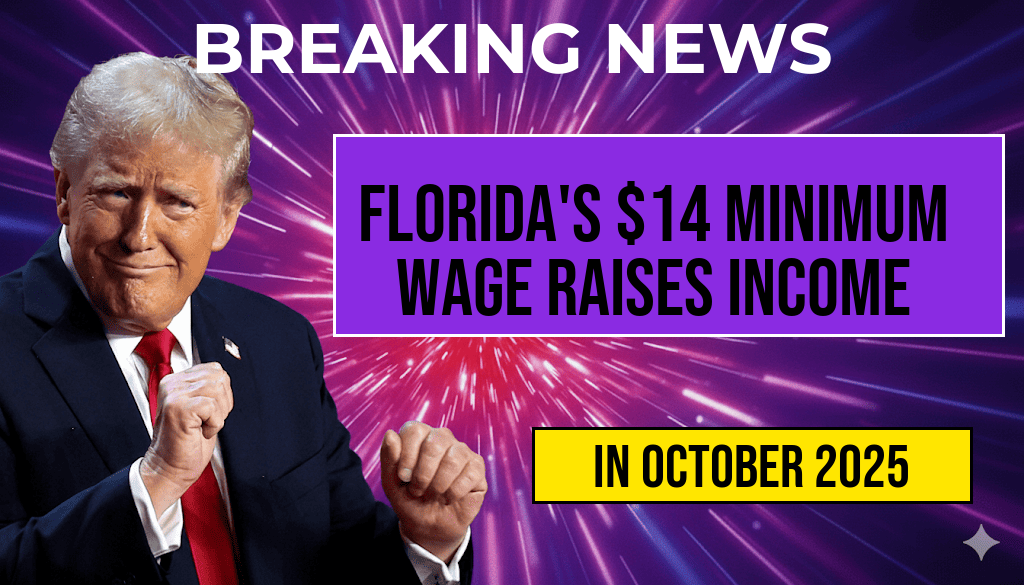Florida’s recent increase in the minimum wage to $14 an hour has begun to reshape the economic landscape for thousands of full-time workers across the state. Effective from September 2023, this adjustment represents a significant step in Florida’s ongoing efforts to elevate living standards and reduce income disparities. According to labor department estimates, full-time employees earning the new minimum wage will see their annual income grow by approximately $2,080, a boost that could influence local economies and household budgets alike. This increase aligns Florida with a growing trend among states to implement higher minimum wages, aiming to address the rising cost of living and labor shortages in various sectors. As businesses adapt to the new wage standards, questions about economic impacts and employment patterns are emerging among policymakers and workers.
Details of the Wage Increase and Its Economic Impact
How the Increase Affects Full-Time Workers
Full-time employees working 40 hours per week at the new minimum wage will earn an additional $2,080 annually. This calculation is based on the 52-week work year, multiplying the extra $2 per hour by 40 hours and 52 weeks:
| Hourly Wage Increase | Weekly Additional Income | Annual Additional Income |
|---|---|---|
| $2 | $80 | $4,160 |
However, considering the typical workweek of 40 hours, the actual annual increase for a full-time worker earning exactly $14 per hour is $2,080, which reflects the direct wage boost without overtime or additional benefits.
Economic Benefits for Workers and Households
The wage hike offers tangible benefits for workers, especially those in low-paying sectors such as retail, hospitality, and healthcare. Increased income can lead to better access to healthcare, improved nutrition, and more flexibility in managing household expenses. Economists suggest that higher wages could stimulate local spending, potentially bolstering small businesses and service providers in the region. The Florida Policy Institute estimates that the wage increase could lift thousands of workers out of poverty, reducing reliance on public assistance programs.
Labor Market and Business Response
Business Adaptations and Challenges
Many small and medium-sized businesses face the challenge of adjusting their payrolls to accommodate the new wage standard. Some have expressed concerns about increased labor costs, which could lead to reduced hiring, layoffs, or increased automation. Conversely, others see the wage hike as an investment in employee satisfaction and retention, potentially lowering turnover rates and training costs. Larger corporations with more resources may absorb the increased expenses more comfortably, while smaller firms are actively exploring ways to optimize operations.
Employment Trends and Future Outlook
Initial data from labor market analysts indicate that employment levels in minimum-wage sectors remain stable post-implementation. However, long-term trends will depend on various factors, including overall economic growth, inflation rates, and how businesses adapt to the wage hike. Some experts forecast that the increased income could lead to a modest rise in consumer spending, which may foster new job opportunities in retail and service industries.
Broader Context and Policy Implications
Florida’s Minimum Wage Compared to Other States
Florida’s new minimum wage positions it among states with the highest baseline pay for entry-level workers. According to the U.S. Department of Labor, several states, including California and Washington, have minimum wages exceeding $15 per hour. The move reflects Florida’s commitment to addressing income inequality while balancing economic growth—a strategy also seen in states that have phased in higher wages over several years.
Policy Debates and Future Increases
While supporters emphasize improved quality of life and economic stimulation, critics argue that higher wages could lead to increased unemployment or inflationary pressures. Policymakers in Florida are closely monitoring economic indicators to assess the long-term effects of the wage increase. Discussions about future adjustments are already underway, with some advocacy groups pushing for further increases to match inflation and living costs.
Additional Resources
- Wikipedia: Minimum wage in the United States
- Forbes: How States Are Approaching Minimum Wage Increases
Frequently Asked Questions
What is the new minimum wage in Florida?
The minimum wage in Florida has increased to $14 an hour, reflecting recent changes aimed at supporting workers across the state.
How does the wage increase impact full-time workers’ annual income?
For full-time workers, the wage boost results in an additional $2,080 in annual income, providing greater financial stability and purchasing power.
When did Florida implement the new minimum wage?
The new minimum wage was officially implemented in 2023, marking a significant step in Florida’s efforts to improve living standards for workers.
Who benefits from the minimum wage increase?
The increase primarily benefits full-time workers earning close to or at the minimum wage, helping them meet rising living costs and improve their economic situation.
Are there future plans for minimum wage adjustments in Florida?
Yes, Florida has plans to periodically review and potentially further increase the minimum wage to keep pace with inflation and economic conditions.

Leave a Reply